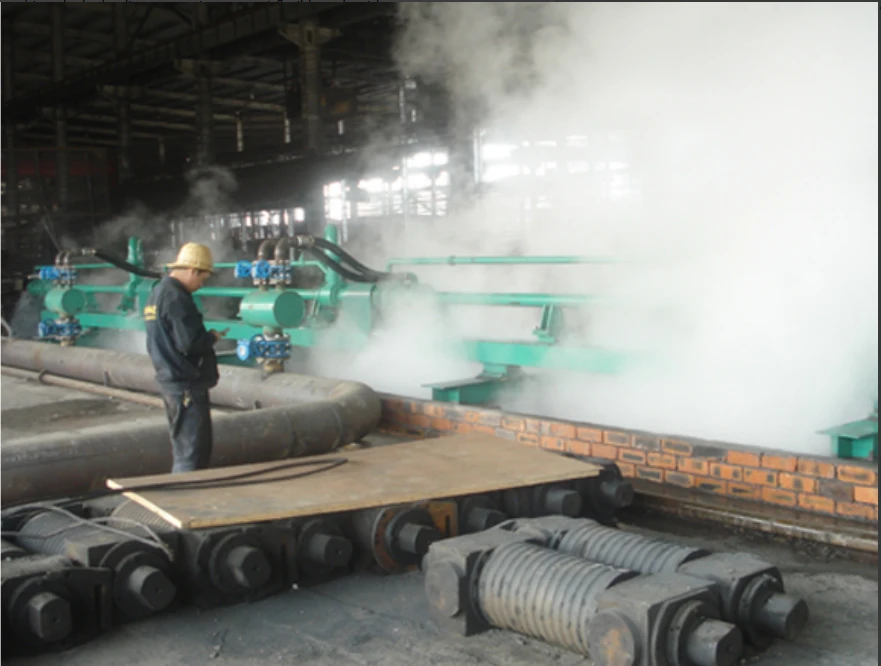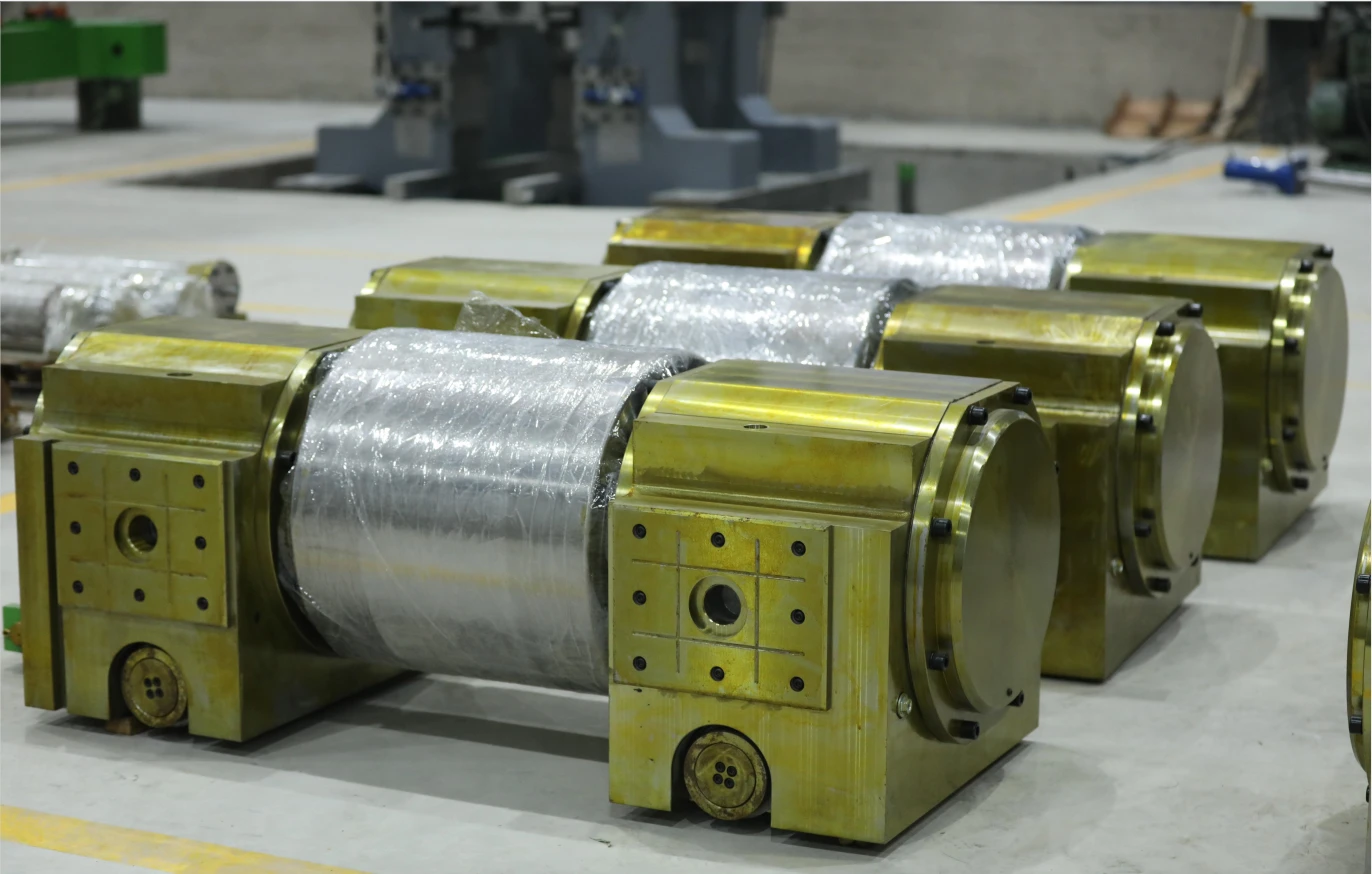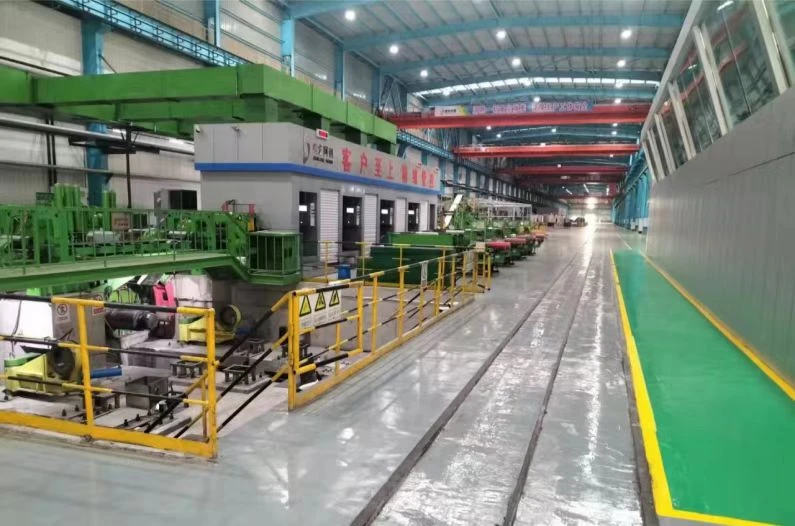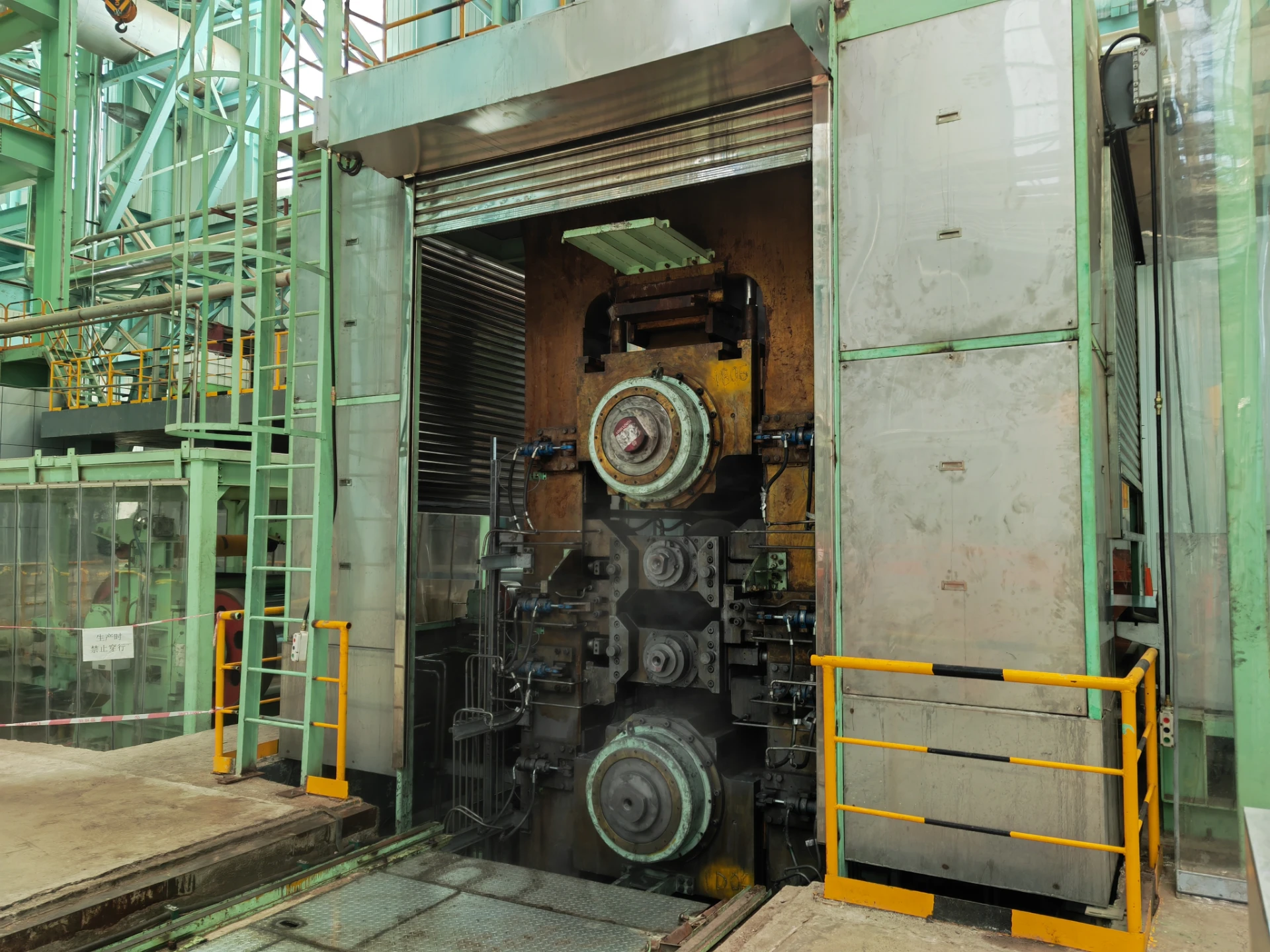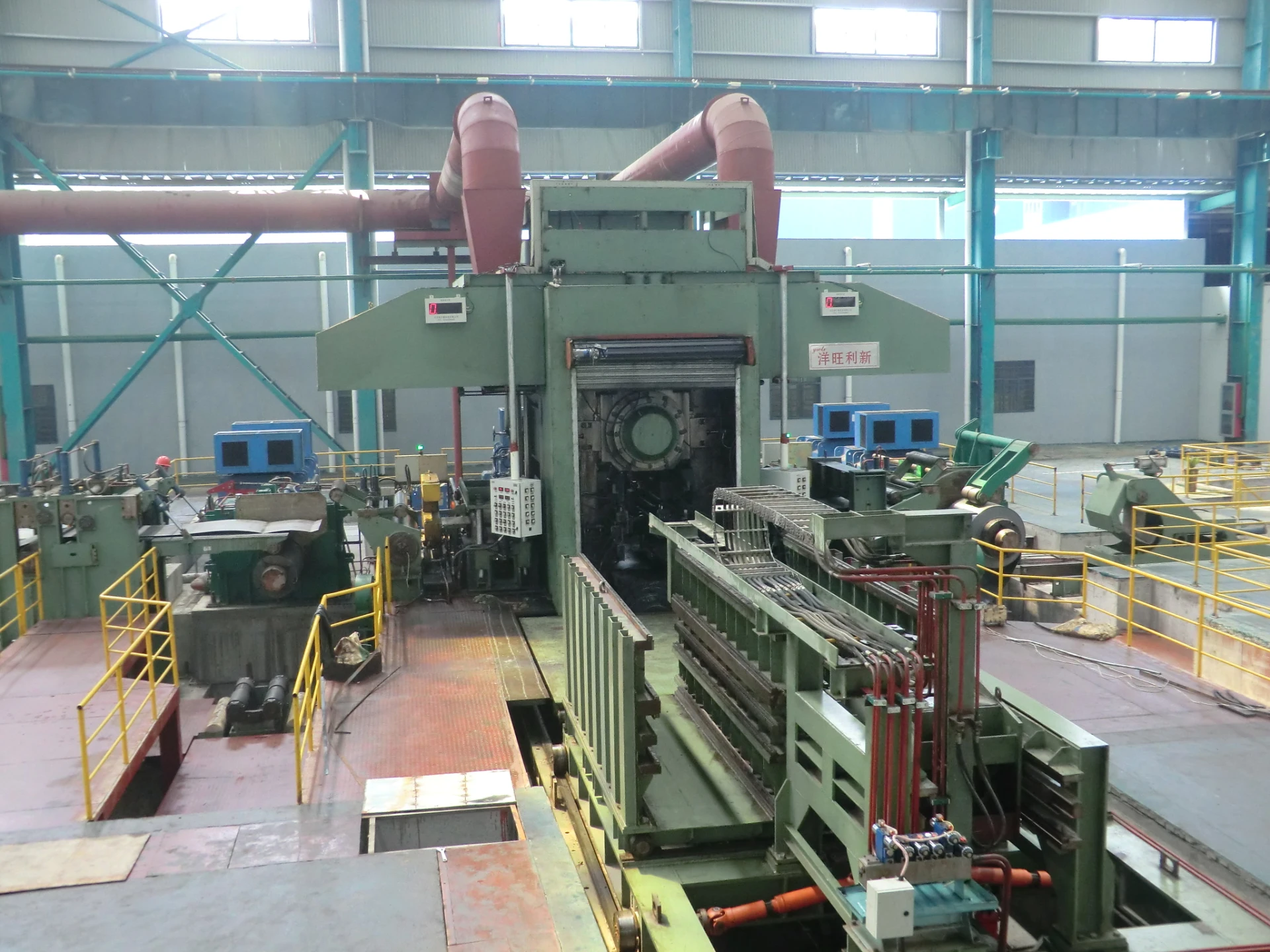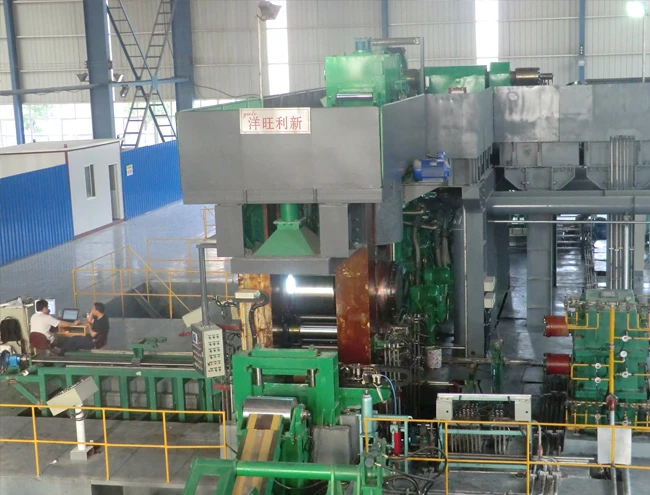
Enhancing Mechanical Properties through Temper Rolling
The modern steel industry relies heavily on temper rolling as a critical finishing process to enhance the mechanical properties of steel sheets and strips. A temper mill, also known as a temper pass mill, performs this essential operation that significantly improves material characteristics while maintaining precise dimensional tolerances. This process, often called temper rolling or skin pass rolling, involves a light cold reduction that imparts unique benefits to the final product. As manufacturers increasingly demand high-quality steel with consistent properties, understanding the temper mill process becomes paramount for producing temper mill steel that meets stringent industrial requirements across automotive, construction, and appliance manufacturing sectors.

The Fundamental Mechanics of Temper Rolling Process
At its core, the temper rolling process works by subjecting annealed steel to a controlled amount of cold deformation in a temper rolling mill. This mechanical treatment creates several simultaneous effects on the metal's microstructure. The process introduces dislocations in the crystal structure while avoiding significant thickness reduction, which would otherwise require more substantial force. A properly calibrated temper mill achieves this delicate balance by applying just enough pressure to modify the steel's properties without compromising its formability. The resulting temper mill steel exhibits improved surface characteristics, enhanced flatness, and more consistent mechanical behavior throughout the coil. This precision makes the temper pass mill an indispensable component in modern steel processing lines, particularly for products requiring exacting quality standards.
Microstructural Transformations in Temper Mill Steel
The changes occurring at the atomic level during temper rolling account for the remarkable improvements in material performance. When steel passes through a temper mill, the process generates a controlled amount of plastic deformation that rearranges the crystalline structure. Unlike conventional cold rolling that focuses on significant thickness reduction, temper rolling specifically targets the steel's yield point elongation - a phenomenon that can cause stretcher strains or Lüders bands during forming operations. The temper mill process effectively eliminates these imperfections by creating a uniform distribution of dislocations throughout the material. This microstructural modification gives temper mill steel its characteristic combination of strength and ductility, making it particularly valuable for applications requiring precise forming characteristics combined with structural integrity.
Surface Enhancement through Temper Rolling Mills
Beyond mechanical property modification, temper rolling mills provide critical surface improvements to steel products. The temper pass mill employs specially textured work rolls that impart a controlled surface finish to the steel, ranging from matte to mirror-like appearances depending on application requirements. This surface treatment serves multiple purposes: it enhances paint adhesion for automotive applications, improves lubrication retention for formed parts, and creates consistent aesthetic qualities for consumer products. Modern temper rolling mill designs incorporate advanced roll texturing technologies, including electron beam texturing and laser patterning, allowing manufacturers to produce tailored surface finishes with unprecedented precision. The ability to control surface characteristics while simultaneously enhancing mechanical properties makes the temper mill an invaluable tool in premium steel production.
Yield Point Elimination and Strain Aging Prevention of Temper Rolling
One of the most valuable functions of temper rolling lies in its ability to eliminate the yield point phenomenon in low-carbon steels. When untreated annealed steel undergoes forming operations, it often exhibits discontinuous yielding, resulting in undesirable surface defects. The temper mill process effectively eradicates this problem by introducing dislocations that prevent the sudden yield point elongation. Furthermore, temper rolling provides protection against strain aging - a time-dependent hardening process that can occur in untreated steel at room temperature. By passing through a temper rolling mill, the material becomes stabilized against such aging effects, ensuring consistent mechanical properties throughout its service life. This stabilization proves particularly crucial for automotive manufacturers and other industries where material consistency directly impacts manufacturing reliability and product performance.
Dimensional Control and Shape Correction Capabilities Temper Rolling
Modern temper rolling mills serve a dual purpose as precision shape correction devices. While primarily employed for property enhancement, the temper pass mill simultaneously improves the flatness and dimensional stability of steel strips. The process applies uniform tension across the strip width, effectively ironing out minor shape imperfections that may have developed during previous processing stages. This shape correction capability becomes increasingly important as industries demand tighter thickness tolerances and superior flatness in their steel products. Advanced temper rolling mill designs incorporate sophisticated shape measurement systems and automatic flatness control mechanisms that adjust roll forces in real-time, ensuring optimal product geometry. The combination of mechanical property enhancement and dimensional control makes the temper mill process a comprehensive finishing solution for high-quality steel production.
Application-Specific Temper Rolling Strategies
Different end-use applications require tailored approaches to temper rolling, with process parameters carefully adjusted to achieve desired material characteristics. For automotive exposed panels, temper mill steel must exhibit perfect surface quality and consistent forming behavior, demanding precise control of reduction rates and roll surface conditions. In contrast, structural applications may prioritize strength characteristics over surface finish, leading to different temper rolling mill configurations. The appliance industry often requires a balance between formability and dent resistance, achieved through specific temper pass mill settings. Modern processing lines accommodate these varied requirements through flexible mill designs that can quickly adjust rolling parameters between different product grades. This application-specific optimization demonstrates the versatility of temper rolling as a property-enhancing technology across multiple market segments.
Technological Advancements in Modern Temper Rolling Mills
Recent years have witnessed significant technological advancements in temper rolling mill design and operation. Contemporary installations feature sophisticated automation systems that precisely control rolling force, tension, and speed to achieve consistent product quality. Many mills now incorporate machine learning algorithms that optimize process parameters based on real-time feedback from advanced sensors measuring strip flatness, surface quality, and mechanical properties. Some next-generation temper pass mills employ innovative roll cooling systems that maintain precise thermal conditions for consistent rolling performance. These technological improvements have dramatically enhanced the precision and efficiency of the temper rolling process, allowing manufacturers to produce temper mill steel with tighter property tolerances and superior quality consistency than ever before.
Environmental and Economic Benefits of Temper Rolling
The temper mill process offers notable sustainability advantages compared to alternative property-enhancement methods. By achieving desired material characteristics through minimal cold work (typically 1-3% reduction), temper rolling consumes significantly less energy than conventional cold rolling processes. This efficiency translates into reduced carbon emissions and lower operating costs for steel producers. Additionally, the ability of temper rolling mills to salvage marginally out-of-spec material through property modification helps reduce scrap rates and improve overall material utilization. As industries worldwide focus on sustainable manufacturing practices, the temper rolling process stands out as an environmentally responsible solution for producing high-performance steel products with minimal resource expenditure.
The Indispensable Role of Temper Rolling in Modern Steelmaking
Temper rolling has established itself as an essential process in the production of high-quality flat steel products. From its fundamental role in eliminating yield point elongation to its precision surface enhancement capabilities, the temper mill process delivers unique benefits that cannot be achieved through other manufacturing methods. As industries continue to demand steel with increasingly stringent property requirements, temper rolling mills will remain at the forefront of metallurgical finishing technology. The ongoing evolution of temper rolling technology - combining advanced process control, innovative mill designs, and sophisticated material science - ensures that this critical process will continue to enhance steel products for diverse applications well into the future. For manufacturers seeking to produce premium-quality steel with optimized mechanical properties and surface characteristics, investment in state-of-the-art temper rolling technology represents a strategic imperative in today's competitive marketplace.
-
Indian Clients Visit YWLX to Inspect Skin-pass MillNewsJun.22,2025
-
Typical Products from Reversing Cold Rolling ProcessNewsMay.26,2025
-
Surface Finish Improvement through Skin Pass RollingNewsMay.26,2025
-
Integration of AGC Systems in Modern Cold Rolling MillsNewsMay.26,2025
-
Cold Rolling in the Context of High-Strength Steel DemandNewsMay.26,2025
-
AGC in Hot Rolling Mills: Challenges and SolutionsNewsMay.26,2025
-
Why Reversing Cold Rolling Mills Are Ideal for Specialty MetalsNewsMay.13,2025




